Unsupervised clustering of pet photos
Introduction
I will explore how I can give the computer a group of pet images, and it can cluster the ones with the same animals together.
I will be doing that by encoding the images through a trained convolutional network, and then apply a clustering algorithm to the encoded features. We can then check the clusters and see if it worked!
Let’s import the libraries we’ll need
Keras is using a TensorFlow backend in our case here.
% matplotlib inline
import time
import os, os.path
import random
import cv2
import glob
import keras
import matplotlib
import matplotlib.pyplot as plt
from sklearn.model_selection import train_test_split
from sklearn.cluster import KMeans
from sklearn.mixture import GaussianMixture
from sklearn.decomposition import PCA
import pandas as pd
import numpy as np
Using TensorFlow backend.
Dataset information
Pet images are in directories with the following format:
Character + Number + ‘-‘ + breed name.
Character is either C or D for cat or dog. Number is a serial number for the breed. No two breeds of the same animal have the same number.
Examples:
C1-Abyssinian D6-Chiuahua
We will use this information to list the breeds available and count the number of images available for each.
# directory where images are stored
DIR = "./animal_images"
def dataset_stats():
# This is an array with the letters available.
# If you add another animal later, you will need to structure its images in the same way
# and add its letter to this array
animal_characters = ['C', 'D']
# dictionary where we will store the stats
stats = []
for animal in animal_characters:
# get a list of subdirectories that start with this character
directory_list = sorted(glob.glob("{}/[{}]*".format(DIR, animal)))
for sub_directory in directory_list:
file_names = [file for file in os.listdir(sub_directory)]
file_count = len(file_names)
sub_directory_name = os.path.basename(sub_directory)
stats.append({ "Code": sub_directory_name[:sub_directory_name.find('-')],
"Image count": file_count,
"Folder name": os.path.basename(sub_directory),
"File names": file_names})
df = pd.DataFrame(stats)
return df
# Show codes with their folder names and image counts
dataset = dataset_stats().set_index("Code")
dataset[["Folder name", "Image count"]]
| Folder name | Image count | |
|---|---|---|
| Code | ||
| C1 | C1-Abyssinian | 198 |
| C10 | C10-Russian_blue | 200 |
| C11 | C11-Siamese | 200 |
| C12 | C12-Sphynx | 200 |
| C2 | C2-Bengal | 200 |
| C3 | C3-Birman | 200 |
| C4 | C4-Bombay | 200 |
| C5 | C5-British_Shorthair | 200 |
| C6 | C6-Egyptian_Mau | 192 |
| C7 | C7-Maine_coon | 200 |
| C8 | C8-Persian | 200 |
| C9 | C9-Ragdoll | 200 |
| D1 | D1-American_bulldog | 200 |
| D10 | D10-Great_pyrenees | 200 |
| D11 | D11-Havanese | 200 |
| D12 | D12-Japanese_chin | 200 |
| D13 | D13-Keeshond | 200 |
| D14 | D14-Leonberger | 200 |
| D15 | D15-Miniature_pincher | 200 |
| D16 | D16-Newfoundland | 200 |
| D17 | D17-Pomeranian | 200 |
| D18 | D18-Pug | 200 |
| D19 | D19-Saint_bernard | 200 |
| D2 | D2-American_pit_bull_terrier | 200 |
| D20 | D20-Samoyed | 200 |
| D21 | D21-Scottish_terrier | 199 |
| D22 | D22-Shiba_inu | 200 |
| D23 | D23-Staffordshire_bull_terrier | 191 |
| D24 | D24-Wheaten_terrier | 200 |
| D25 | D25-Yorkshire_terrier | 200 |
| D3 | D3-Basset_hound | 200 |
| D4 | D4-Beagle | 200 |
| D5 | D5-Boxer | 200 |
| D6 | D6-Chiuahua | 200 |
| D7 | D7-English_Cocker_Spaniel | 200 |
| D8 | D8-English_setter | 200 |
| D9 | D9-German_shorthaired | 200 |
Loading the images
Now we create a function that loads all images in a directory for a given array of codes in one array and creates the corresponding label array for them.
Loaded images are resized to 224 x 224 before storing them in our array since this is the size preferred by VGG19 which we will be using later.
# Function returns an array of images whoose filenames start with a given set of characters
# after resizing them to 224 x 224
def load_images(codes):
# Define empty arrays where we will store our images and labels
images = []
labels = []
for code in codes:
# get the folder name for this code
folder_name = dataset.loc[code]["Folder name"]
for file in dataset.loc[code]["File names"]:
# build file path
file_path = os.path.join(DIR, folder_name, file)
# Read the image
image = cv2.imread(file_path)
# Resize it to 224 x 224
image = cv2.resize(image, (224,224))
# Convert it from BGR to RGB so we can plot them later (because openCV reads images as BGR)
image = cv2.cvtColor(image, cv2.COLOR_BGR2RGB)
# Now we add it to our array
images.append(image)
labels.append(code)
return images, labels
Now we chose our codes for the breeds that we want and load the images and labels
I will chose two cat breeds and two dog breeds. While working on the whole dataset would yield more interesting results, it requires more memory than my computer has.
codes = ["C1", "C8", "D19", "D25"]
images, labels = load_images(codes)
Photo time!
Let’s have a look at the breeds we loaded! The photos will not be in their original aspect ratio since we’ve resized them to fit what VGG needs
def show_random_images(images, labels, number_of_images_to_show=2):
for code in list(set(labels)):
indicies = [i for i, label in enumerate(labels) if label == code]
random_indicies = [random.choice(indicies) for i in range(number_of_images_to_show)]
figure, axis = plt.subplots(1, number_of_images_to_show)
print("{} random images for code {}".format(number_of_images_to_show, code))
for image in range(number_of_images_to_show):
axis[image].imshow(images[random_indicies[image]])
plt.show()
show_random_images(images, labels)
2 random images for code C1

2 random images for code D25
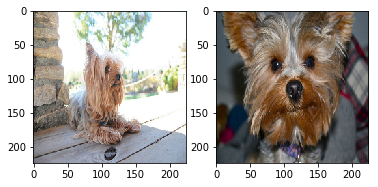
2 random images for code C8
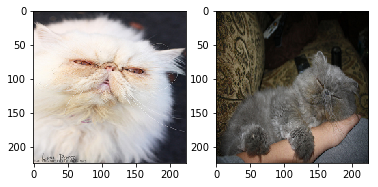
2 random images for code D19
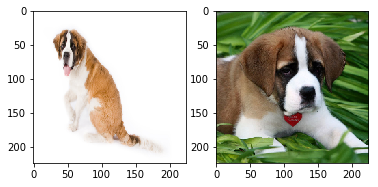
Normalise…
We now convert the images and labels to NumPy arrays to make processing them easier. We then normaise the images before passing them on to VGG19
def normalise_images(images, labels):
# Convert to numpy arrays
images = np.array(images, dtype=np.float32)
labels = np.array(labels)
# Normalise the images
images /= 255
return images, labels
images, labels = normalise_images(images, labels)
Time to mix it up!
Now that we have all the photos and their labels in arrays. It’s time to shuffle them around, and split them to three different sets… training, validation and testing.
We’ll be using the train_test_split function from sklearn which will also shuffle the data around for us, since it’s currently in order.
def shuffle_data(images, labels):
# Set aside the testing data. We won't touch these until the very end.
X_train, X_test, y_train, y_test = train_test_split(images, labels, test_size=0, random_state=728)
return X_train, y_train
X_train, y_train = shuffle_data(images, labels)
Load pre-trained covnet models
VGG16, VG19, ResNet50
We’ll now load up the keras models with the imagenet weights. We’ll remove the top dense layers, since we won’t need to classify things here, and we just want these encoded features from the images.
# Load the models with ImageNet weights
vgg16_model = keras.applications.vgg16.VGG16(include_top=False, weights="imagenet", input_shape=(224,224,3))
vgg19_model = keras.applications.vgg19.VGG19(include_top=False, weights="imagenet", input_shape=(224,224,3))
resnet50_model = keras.applications.resnet50.ResNet50(include_top=False, weights="imagenet", input_shape=(224,224,3))
Output… falls flat
The covnet models will give us 3D vectors that represent the image. We need to flatten these for the clustering algorithms to start working with them.
def covnet_transform(covnet_model, raw_images):
# Pass our training data through the network
pred = covnet_model.predict(raw_images)
# Flatten the array
flat = pred.reshape(raw_images.shape[0], -1)
return flat
vgg16_output = covnet_transform(vgg16_model, X_train)
print("VGG16 flattened output has {} features".format(vgg16_output.shape[1]))
vgg19_output = covnet_transform(vgg19_model, X_train)
print("VGG19 flattened output has {} features".format(vgg19_output.shape[1]))
resnet50_output = covnet_transform(resnet50_model, X_train)
print("ResNet50 flattened output has {} features".format(resnet50_output.shape[1]))
VGG16 flattened output has 25088 features
VGG19 flattened output has 25088 features
ResNet50 flattened output has 2048 features
The above cell shows us the number of features each covnet gives to a single image. When we compare these to the original size of the image 224 x 224 x 3 = 150,528 pixels/features, we can see that this is a large reduction in what the clustering algorithms will have to work with.
Hopefully these reduces number of feature are represent more meaningful features in the image structure.
PCA
While k-means clustering has coped with these numbers, Gaussian Mixture Modelling has not and the computer consistently ran out of memory and struggled to produce results.
We therefore look to PCA for dimensionality reduction, so that our clustering algorithms can cope.
# Function that creates a PCA instance, fits it to the data and returns the instance
def create_fit_PCA(data, n_components=None):
p = PCA(n_components=n_components, random_state=728)
p.fit(data)
return p
# Create PCA instances for each covnet output
vgg16_pca = create_fit_PCA(vgg16_output)
vgg19_pca = create_fit_PCA(vgg19_output)
resnet50_pca = create_fit_PCA(resnet50_output)
# Function to plot the cumulative explained variance of PCA components
# This will help us decide how many components we should reduce our features to
def pca_cumsum_plot(pca):
plt.plot(np.cumsum(pca.explained_variance_ratio_))
plt.xlabel('number of components')
plt.ylabel('cumulative explained variance')
plt.show()
# Plot the cumulative explained variance for each covnet
pca_cumsum_plot(vgg16_pca)
pca_cumsum_plot(vgg19_pca)
pca_cumsum_plot(resnet50_pca)


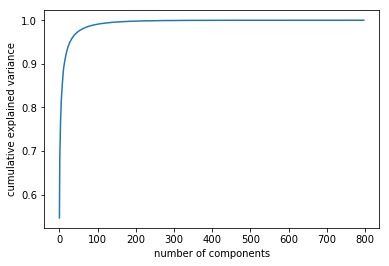
Looking at the gaphs above, we can see that PCA can explain almost all the variance in as many dimensions as there are samples.
It is also interesting to note the difference in shape between the VGG graphs and the ResNet one. This is probably due to the fact that ResNet only had 2048 dimensions to start with, while VGGs had 25,088
# PCA transformations of covnet outputs
vgg16_output_pca = vgg16_pca.transform(vgg16_output)
vgg19_output_pca = vgg19_pca.transform(vgg19_output)
resnet50_output_pca = resnet50_pca.transform(resnet50_output)
Cluster time
Let’s write a couple of functions that would create and fit KMeans and Gaussian Mixture models. While it can make sense to combine them in one function that returns both, I’ve seperated them so we can execute them seperately and make some observations without overloading the PC
def create_train_kmeans(data, number_of_clusters=len(codes)):
# n_jobs is set to -1 to use all available CPU cores. This makes a big difference on an 8-core CPU
# especially when the data size gets much bigger. #perfMatters
k = KMeans(n_clusters=number_of_clusters, n_jobs=-1, random_state=728)
# Let's do some timings to see how long it takes to train.
start = time.time()
# Train it up
k.fit(data)
# Stop the timing
end = time.time()
# And see how long that took
print("Training took {} seconds".format(end-start))
return k
def create_train_gmm(data, number_of_clusters=len(codes)):
g = GaussianMixture(n_components=number_of_clusters, covariance_type="full", random_state=728)
start=time.time()
g.fit(data)
end=time.time()
print("Training took {} seconds".format(end-start))
return g
Ask the clustering algo what it thinks is what
# Let's pass the data into the algorithm and predict who lies in which cluster.
# Since we're using the same data that we trained it on, this should give us the training results.
# Here we create and fit a KMeans model with the PCA outputs
print("KMeans (PCA): \n")
print("VGG16")
K_vgg16_pca = create_train_kmeans(vgg16_output_pca)
print("\nVGG19")
K_vgg19_pca = create_train_kmeans(vgg19_output_pca)
print("\nResNet50")
K_resnet50_pca = create_train_kmeans(resnet50_output_pca)
KMeans (PCA):
VGG16
Training took 0.7219288349151611 seconds
VGG19
Training took 0.6002073287963867 seconds
ResNet50
Training took 0.5995471477508545 seconds
# Same for Gaussian Model
print("GMM (PCA): \n")
print("VGG16")
G_vgg16_pca = create_train_gmm(vgg16_output_pca)
print("\nVGG19")
G_vgg19_pca = create_train_gmm(vgg19_output_pca)
print("\nResNet50")
G_resnet50_pca = create_train_gmm(resnet50_output_pca)
GMM (PCA):
VGG16
Training took 1.0057599544525146 seconds
VGG19
Training took 0.3446829319000244 seconds
ResNet50
Training took 0.3524143695831299 seconds
# Let's also create models for the covnet outputs without PCA for comparison
print("KMeans: \n")
print("VGG16:")
K_vgg16 = create_train_kmeans(vgg16_output)
print("\nVGG19:")
K_vgg19 = create_train_kmeans(vgg19_output)
print("\nResNet50:")
K_resnet50 = create_train_kmeans(resnet50_output)
KMeans:
VGG16:
Training took 6.9162092208862305 seconds
VGG19:
Training took 7.194207668304443 seconds
ResNet50:
Training took 0.7229974269866943 seconds
Attempts to run the Gaussian Mixtue Model on the outputs without PCA always give an out of memory error. I am therefore unable to test these and conclude that they are impractical to use.
# Now we get the custer model predictions
# KMeans with PCA outputs
k_vgg16_pred_pca = K_vgg16_pca.predict(vgg16_output_pca)
k_vgg19_pred_pca = K_vgg19_pca.predict(vgg19_output_pca)
k_resnet50_pred_pca = K_resnet50_pca.predict(resnet50_output_pca)
# KMeans with CovNet outputs
k_vgg16_pred = K_vgg16.predict(vgg16_output)
k_vgg19_pred = K_vgg19.predict(vgg19_output)
k_resnet50_pred = K_resnet50.predict(resnet50_output)
# Gaussian Mixture with PCA outputs
g_resnet50_pred_pca = G_resnet50_pca.predict(resnet50_output_pca)
g_vgg16_pred_pca = G_vgg16_pca.predict(vgg16_output_pca)
g_vgg19_pred_pca = G_vgg19_pca.predict(vgg19_output_pca)
Remember that the clustering algorith does not detect which images are cats and which are dogs, it only groups images that look alike together and assigns them a number arbitrarily.
We now need to count how many of each label are in each cluster, this way we can take a look and if sufficient eperation has happened we can quicly see which cluster is which label. So let’s write a function that does that.
def cluster_label_count(clusters, labels):
count = {}
# Get unique clusters and labels
unique_clusters = list(set(clusters))
unique_labels = list(set(labels))
# Create counter for each cluster/label combination and set it to 0
for cluster in unique_clusters:
count[cluster] = {}
for label in unique_labels:
count[cluster][label] = 0
# Let's count
for i in range(len(clusters)):
count[clusters[i]][labels[i]] +=1
cluster_df = pd.DataFrame(count)
return cluster_df
# Cluster counting for VGG16 Means
vgg16_cluster_count = cluster_label_count(k_vgg16_pred, y_train)
vgg16_cluster_count_pca = cluster_label_count(k_vgg16_pred_pca, y_train)
# VGG19 KMeans
vgg19_cluster_count = cluster_label_count(k_vgg19_pred, y_train)
vgg19_cluster_count_pca = cluster_label_count(k_vgg19_pred_pca, y_train)
# ResNet50 KMeans
resnet_cluster_count = cluster_label_count(k_resnet50_pred, y_train)
resnet_cluster_count_pca = cluster_label_count(k_resnet50_pred_pca, y_train)
# GMM
g_vgg16_cluster_count_pca = cluster_label_count(g_vgg16_pred_pca, y_train)
g_vgg19_cluster_count_pca = cluster_label_count(g_vgg19_pred_pca, y_train)
g_resnet50_cluster_count_pca = cluster_label_count(g_resnet50_pred_pca, y_train)
print("KMeans VGG16: ")
vgg16_cluster_count
KMeans VGG16:
| 0 | 1 | 2 | 3 | |
|---|---|---|---|---|
| C1 | 7 | 167 | 24 | 0 |
| C8 | 6 | 18 | 166 | 10 |
| D19 | 163 | 25 | 9 | 3 |
| D25 | 44 | 17 | 16 | 123 |
print("KMeans VGG16 (PCA): ")
vgg16_cluster_count_pca
KMeans VGG16 (PCA):
| 0 | 1 | 2 | 3 | |
|---|---|---|---|---|
| C1 | 7 | 167 | 24 | 0 |
| C8 | 6 | 18 | 166 | 10 |
| D19 | 163 | 25 | 9 | 3 |
| D25 | 44 | 17 | 16 | 123 |
print("GMM VGG16: ")
g_vgg16_cluster_count_pca
GMM VGG16:
| 0 | 1 | 2 | 3 | |
|---|---|---|---|---|
| C1 | 0 | 73 | 3 | 122 |
| C8 | 0 | 175 | 19 | 6 |
| D19 | 2 | 79 | 108 | 11 |
| D25 | 1 | 43 | 147 | 9 |
We can see now that the Gaussian Model did not give a meaningful result. There are no clear dominant code for each cluster
print("KMeans VGG19: ")
vgg19_cluster_count
KMeans VGG19:
| 0 | 1 | 2 | 3 | |
|---|---|---|---|---|
| C1 | 105 | 57 | 12 | 24 |
| C8 | 10 | 101 | 65 | 24 |
| D19 | 4 | 50 | 0 | 146 |
| D25 | 18 | 24 | 86 | 72 |
print("KMeans VGG19 (PCA): ")
vgg19_cluster_count_pca
KMeans VGG19 (PCA):
| 0 | 1 | 2 | 3 | |
|---|---|---|---|---|
| C1 | 105 | 57 | 12 | 24 |
| C8 | 10 | 101 | 65 | 24 |
| D19 | 4 | 50 | 0 | 146 |
| D25 | 18 | 24 | 86 | 72 |
print("GMM VGG19 (PCA): ")
g_vgg19_cluster_count_pca
GMM VGG19 (PCA):
| 0 | 1 | 2 | 3 | |
|---|---|---|---|---|
| C1 | 0 | 176 | 20 | 2 |
| C8 | 0 | 132 | 68 | 0 |
| D19 | 1 | 77 | 122 | 0 |
| D25 | 0 | 34 | 166 | 0 |
print("KMeans Resnet50: ")
resnet_cluster_count
KMeans Resnet50:
| 0 | 1 | 2 | 3 | |
|---|---|---|---|---|
| C1 | 96 | 11 | 86 | 5 |
| C8 | 153 | 4 | 42 | 1 |
| D19 | 17 | 94 | 66 | 23 |
| D25 | 49 | 21 | 111 | 19 |
print("Kmeans Resnet50 (PCA): ")
resnet_cluster_count_pca
Kmeans Resnet50 (PCA):
| 0 | 1 | 2 | 3 | |
|---|---|---|---|---|
| C1 | 96 | 11 | 86 | 5 |
| C8 | 153 | 4 | 42 | 1 |
| D19 | 17 | 94 | 66 | 23 |
| D25 | 49 | 21 | 111 | 19 |
print("GMM Resnet50 (PCA): ")
g_resnet50_cluster_count_pca
GMM Resnet50 (PCA):
| 0 | 1 | 2 | 3 | |
|---|---|---|---|---|
| C1 | 5 | 96 | 10 | 87 |
| C8 | 1 | 153 | 4 | 42 |
| D19 | 24 | 17 | 93 | 66 |
| D25 | 21 | 52 | 19 | 108 |
We can see again, that models which took ResNet50 representations could not produce meaningful clusters. We will therefore stop pursuing them.
The models that made it through are:
- KMeans VGG16
- KMeans VGG16 PCA
- KMeans VGG19
- KMeans VGG19 PCA
Let’s calculate some scores and see which one performs best.
Cluster - Label assignment
In this part, we will manually look at the cluster count and give a best guess as to which cluster corresonds to which label. While normally each cluster will mostly consist of one label, it is not necessary the case if the clustering algorithm fails to seperate the images. It is therefore better to take stock here, and make sure that we are on the right path.
# Manually adjust these lists so that the index of each label reflects which cluter it lies in
vgg16_cluster_code = ["D19", "C1", "C8", "D25"]
vgg16_cluster_code_pca = ["D19", "C1", "C8", "D25"]
vgg19_cluster_code = ["C1", "C8", "D25", "D19"]
vgg19_cluster_code_pca = ["C1", "C8", "D25", "D19"]
# g_vgg19_cluster_code_pca = ["D25", "D19", "C8", "C1"]
Replace the predicted clusters with their labels
vgg16_pred_codes = [vgg16_cluster_code[x] for x in k_vgg16_pred]
vgg16_pred_codes_pca = [vgg16_cluster_code_pca[x] for x in k_vgg16_pred_pca]
vgg19_pred_codes = [vgg19_cluster_code[x] for x in k_vgg19_pred]
vgg19_pred_codes_pca = [vgg19_cluster_code_pca[x] for x in k_vgg19_pred_pca]
# g_vgg19_pred_codes_pca = [g_vgg19_cluster_code_pca[x] for x in g_vgg19_pred_pca]
Metrics
Now that we have two arrays, one with the predicted labels and one with the true labels, we can go crazy with performance scores… or we can just compute the F1 score
from sklearn.metrics import accuracy_score, f1_score
def print_scores(true, pred):
acc = accuracy_score(true, pred)
f1 = f1_score(true, pred, average="macro")
return "\n\tF1 Score: {0:0.8f} | Accuracy: {0:0.8f}".format(f1,acc)
print("KMeans VGG16:", print_scores(y_train, vgg16_pred_codes))
print("KMeans VGG16 (PCA)", print_scores(y_train, vgg16_pred_codes_pca))
print("\nKMeans VGG19: ", print_scores(y_train, vgg19_pred_codes))
print("KMeans VGG19 (PCA): ", print_scores(y_train, vgg19_pred_codes_pca))
# print("GMM VGG19 (PCA)", print_scores(y_train, g_vgg19_pred_codes_pca))
KMeans VGG16:
F1 Score: 0.77355392 | Accuracy: 0.77355392
KMeans VGG16 (PCA)
F1 Score: 0.77355392 | Accuracy: 0.77355392
KMeans VGG19:
F1 Score: 0.54872423 | Accuracy: 0.54872423
KMeans VGG19 (PCA):
F1 Score: 0.54872423 | Accuracy: 0.54872423
of note:
-
The scores (and cluster counts) of PCA and non-PCA transformed outputs are exactly the same. Since we fixed all random states, with the only difference being the inputs, we can see that PCA-transformed data adequately represents the original data while givig us faster training times and lower memory usage.
-
The clusters for PCA and non-PCA transformed data are exactly in the same order.
Testing Time
Ultimately, for best results, you would want to do this whole excercise every time you change your data in order to find out which model is the best for this particular data.
We can now then do the same thing for our testing data, and see if it gives the best accuracy again. We can keep testing this for more and more breed pairs to gain more confidence that our model works.
This is in the end an unsupevised learning excercise, and we would not be able to check which model is best for a particular set of data if we do not have labels for them. The closer your images are to the dataset images, the better chance you have of getting a high accuracy.
# Let's put it all together
def all_covnet_transform(data):
vgg16 = covnet_transform(vgg16_model, data)
vgg19 = covnet_transform(vgg19_model, data)
resnet50 = covnet_transform(resnet50_model, data)
return vgg16, vgg19, resnet50
def image_load_to_cluster_count(codes):
# Load images
images, labels = load_images(codes)
print(len(images), len(labels))
show_random_images(images, labels)
# Normalise images
images, labels = normalise_images(images, labels)
# Split data
data, labels = shuffle_data(images, labels)
# Get covnet outputs
vgg16_output, vgg19_output, resnet50_output = all_covnet_transform(data)
# Get PCA transformations
vgg16_output_pca = create_fit_PCA(vgg16_output).transform(vgg16_output)
vgg19_output_pca = create_fit_PCA(vgg19_output).transform(vgg19_output)
resnet50_output_pca = create_fit_PCA(resnet50_output).transform(resnet50_output)
# Cluster
clusters = len(codes)
K_vgg16_pred = create_train_kmeans(vgg16_output, clusters).predict(vgg16_output)
K_vgg19_pred = create_train_kmeans(vgg19_output, clusters).predict(vgg19_output)
K_resnet50_pred = create_train_kmeans(resnet50_output, clusters).predict(resnet50_output)
K_vgg16_pred_pca = create_train_kmeans(vgg16_output_pca, clusters).predict(vgg16_output_pca)
K_vgg19_pred_pca = create_train_kmeans(vgg19_output_pca, clusters).predict(vgg19_output_pca)
K_resnet50_pred_pca = create_train_kmeans(resnet50_output_pca, clusters).predict(resnet50_output_pca)
G_vgg16_pred_pca = create_train_gmm(vgg16_output_pca, clusters).predict(vgg16_output_pca)
G_vgg19_pred_pca = create_train_gmm(vgg19_output_pca, clusters).predict(vgg19_output_pca)
G_resnet50_pred_pca = create_train_gmm(resnet50_output_pca, clusters).predict(resnet50_output_pca)
# Count
vgg16_cluster_count = cluster_label_count(K_vgg16_pred, labels)
vgg16_cluster_count_pca = cluster_label_count(K_vgg16_pred_pca, labels)
# VGG19 KMeans
vgg19_cluster_count = cluster_label_count(K_vgg19_pred, labels)
vgg19_cluster_count_pca = cluster_label_count(K_vgg19_pred_pca, labels)
# ResNet50 KMeans
resnet_cluster_count = cluster_label_count(K_resnet50_pred, labels)
resnet_cluster_count_pca = cluster_label_count(K_resnet50_pred_pca, labels)
# GMM
g_vgg16_cluster_count_pca = cluster_label_count(G_vgg16_pred_pca, labels)
g_vgg19_cluster_count_pca = cluster_label_count(G_vgg19_pred_pca, labels)
g_resnet50_cluster_count_pca = cluster_label_count(G_resnet50_pred_pca, labels)
print("KMeans VGG16: ")
print(vgg16_cluster_count)
print("\nKMeans VGG16 (PCA): ")
print(vgg16_cluster_count_pca)
print("\nGMM VGG16: ")
print(g_vgg16_cluster_count_pca)
print("\nKMeans VGG19: ")
print(vgg19_cluster_count)
print("\nKMeans VGG19 (PCA): ")
print(vgg19_cluster_count_pca)
print("GMM VGG19 (PCA): ")
print(g_vgg19_cluster_count_pca)
print("KMeans Resnet50: ")
print(resnet_cluster_count)
print("Kmeans Resnet50 (PCA): ")
print(resnet_cluster_count_pca)
print("GMM Resnet50 (PCA): ")
print(g_resnet50_cluster_count_pca)
return K_vgg16_pred, K_vgg16_pred_pca, K_vgg19_pred, K_vgg19_pred_pca, G_vgg19_pred_pca, images, labels
codes = ["D9", "D21", "D11"]
outputs = image_load_to_cluster_count(codes)
599 599
2 random images for code D9
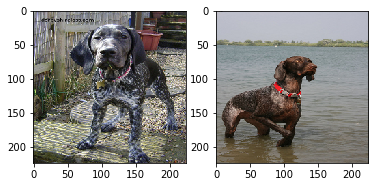
2 random images for code D21
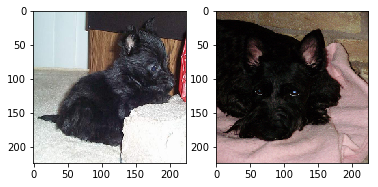
2 random images for code D11
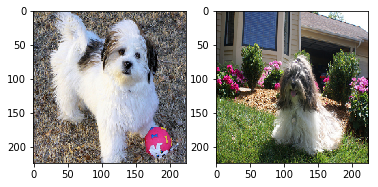
Training took 4.604398488998413 seconds
Training took 4.304678201675415 seconds
Training took 0.7277133464813232 seconds
Training took 0.525261402130127 seconds
Training took 0.5171723365783691 seconds
Training took 0.4291813373565674 seconds
Training took 0.12474989891052246 seconds
Training took 0.12438201904296875 seconds
Training took 0.11364531517028809 seconds
KMeans VGG16:
0 1 2
D11 158 36 6
D21 43 154 2
D9 11 12 177
KMeans VGG16 (PCA):
0 1 2
D11 158 36 6
D21 43 154 2
D9 11 12 177
GMM VGG16:
0 1 2
D11 146 14 40
D21 47 24 128
D9 33 115 52
KMeans VGG19:
0 1 2
D11 134 12 54
D21 61 31 107
D9 18 86 96
KMeans VGG19 (PCA):
0 1 2
D11 134 12 54
D21 61 31 107
D9 18 86 96
GMM VGG19 (PCA):
0 1 2
D11 19 50 131
D21 34 106 59
D9 102 86 12
KMeans Resnet50:
0 1 2
D11 100 15 85
D21 93 18 88
D9 65 48 87
Kmeans Resnet50 (PCA):
0 1 2
D11 100 15 85
D21 93 18 88
D9 65 48 87
GMM Resnet50 (PCA):
0 1 2
D11 97 15 88
D21 91 19 89
D9 65 51 84
# Manually adjust these lists so that the index of each label reflects which cluter it lies in
vgg16_cluster_code = ["D11", "D21", "D9"]
vgg16_cluster_code_pca = ["D11", "D21", "D9"]
vgg19_cluster_code = ["D11", "D9", "D21"]
vgg19_cluster_code_pca = ["D11", "D9", "D21"]
g_vgg19_cluster_code_pca = ["D9", "D21", "D11"]
vgg16_pred_codes = [vgg16_cluster_code[x] for x in outputs[0]]
vgg16_pred_codes_pca = [vgg16_cluster_code_pca[x] for x in outputs[1]]
vgg19_pred_codes = [vgg19_cluster_code[x] for x in outputs[2]]
vgg19_pred_codes_pca = [vgg19_cluster_code_pca[x] for x in outputs[3]]
g_vgg19_pred_codes_pca = [g_vgg19_cluster_code_pca[x] for x in outputs[4]]
print("KMeans VGG16:", print_scores(outputs[-1], vgg16_pred_codes))
print("KMeans VGG16 (PCA)", print_scores(outputs[-1], vgg16_pred_codes_pca))
print("\nKMeans VGG19: ", print_scores(outputs[-1], vgg19_pred_codes))
print("KMeans VGG19 (PCA): ", print_scores(outputs[-1], vgg19_pred_codes_pca))
print("GMM VGG19 (PCA)", print_scores(outputs[-1], g_vgg19_pred_codes_pca))
KMeans VGG16:
F1 Score: 0.81818354 | Accuracy: 0.81818354
KMeans VGG16 (PCA)
F1 Score: 0.81818354 | Accuracy: 0.81818354
KMeans VGG19:
F1 Score: 0.54700167 | Accuracy: 0.54700167
KMeans VGG19 (PCA):
F1 Score: 0.54700167 | Accuracy: 0.54700167
GMM VGG19 (PCA)
F1 Score: 0.56903827 | Accuracy: 0.56903827
Looks like VGG16 is doing the best again! Let’s test one more time…
codes = ["C12", "C8"]
outputs = image_load_to_cluster_count(codes)
400 400
2 random images for code C12
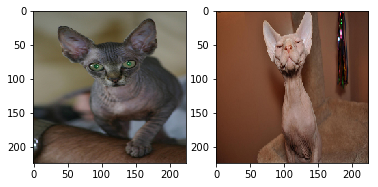
2 random images for code C8
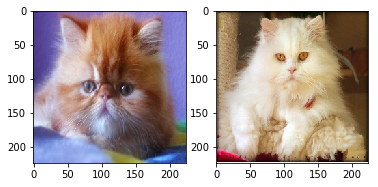
Training took 2.0604324340820312 seconds
Training took 2.1226677894592285 seconds
Training took 0.5574600696563721 seconds
Training took 0.4646637439727783 seconds
Training took 0.45760464668273926 seconds
Training took 0.44739389419555664 seconds
Training took 0.027288436889648438 seconds
Training took 0.02394580841064453 seconds
Training took 0.022562503814697266 seconds
KMeans VGG16:
0 1
C12 5 195
C8 195 5
KMeans VGG16 (PCA):
0 1
C12 5 195
C8 195 5
GMM VGG16:
0 1
C12 5 195
C8 194 6
KMeans VGG19:
0 1
C12 185 15
C8 9 191
KMeans VGG19 (PCA):
0 1
C12 185 15
C8 9 191
GMM VGG19 (PCA):
0 1
C12 1 199
C8 1 199
KMeans Resnet50:
0 1
C12 99 101
C8 20 180
Kmeans Resnet50 (PCA):
0 1
C12 99 101
C8 20 180
GMM Resnet50 (PCA):
0 1
C12 99 101
C8 20 180
By now we can see that ResNet is performing terribly in all our tests. We can also see that PCA and non-PCA are the same, so we can just use the same cluster/code combinations for them, and that GMM has consistently performed same as or much worse than KMeans.
The two we will consider now are Kmeans VGG16 and VGG19
# Manually adjust these lists so that the index of each label reflects which cluter it lies in
vgg16_cluster_code = ["C8", "C12"]
vgg19_cluster_code = ["C12","C8"]
# Let's define a function for scores
def scoring(vgg16_cluster_code, vgg19_cluster_code, outputs):
vgg16_pred_codes = [vgg16_cluster_code[x] for x in outputs[0]]
vgg16_pred_codes_pca = [vgg16_cluster_code[x] for x in outputs[1]]
vgg19_pred_codes = [vgg19_cluster_code[x] for x in outputs[2]]
vgg19_pred_codes_pca = [vgg19_cluster_code[x] for x in outputs[3]]
print("KMeans VGG16:", print_scores(outputs[-1], vgg16_pred_codes))
print("KMeans VGG16 (PCA)", print_scores(outputs[-1], vgg16_pred_codes_pca))
print("\nKMeans VGG19: ", print_scores(outputs[-1], vgg19_pred_codes))
print("KMeans VGG19 (PCA): ", print_scores(outputs[-1], vgg19_pred_codes_pca))
scoring(vgg16_cluster_code, vgg19_cluster_code, outputs)
KMeans VGG16:
F1 Score: 0.97500000 | Accuracy: 0.97500000
KMeans VGG16 (PCA)
F1 Score: 0.97500000 | Accuracy: 0.97500000
KMeans VGG19:
F1 Score: 0.93998650 | Accuracy: 0.93998650
KMeans VGG19 (PCA):
F1 Score: 0.93998650 | Accuracy: 0.93998650
VGG16 wins again!
Now let’s try a cat and dog pair for our final test
codes = ["D1", "C7"]
outputs = image_load_to_cluster_count(codes)
400 400
2 random images for code D1
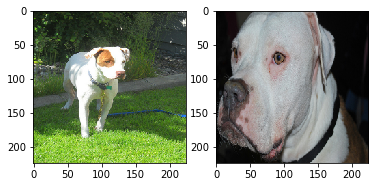
2 random images for code C7
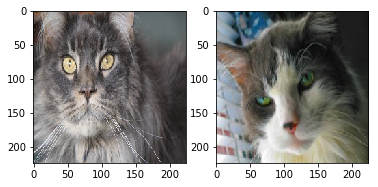
Training took 2.5923378467559814 seconds
Training took 2.034688711166382 seconds
Training took 0.4773135185241699 seconds
Training took 0.5953502655029297 seconds
Training took 0.565504789352417 seconds
Training took 0.4808497428894043 seconds
Training took 0.034923553466796875 seconds
Training took 0.024074554443359375 seconds
Training took 0.025286436080932617 seconds
KMeans VGG16:
0 1
C7 196 4
D1 5 195
KMeans VGG16 (PCA):
0 1
C7 196 4
D1 5 195
GMM VGG16:
0 1
C7 4 196
D1 195 5
KMeans VGG19:
0 1
C7 57 143
D1 200 0
KMeans VGG19 (PCA):
0 1
C7 57 143
D1 200 0
GMM VGG19 (PCA):
0 1
C7 15 185
D1 36 164
KMeans Resnet50:
0 1
C7 41 159
D1 116 84
Kmeans Resnet50 (PCA):
0 1
C7 41 159
D1 116 84
GMM Resnet50 (PCA):
0 1
C7 39 161
D1 111 89
vgg16_cluster_code = ["C7", "D1"]
vgg19_cluster_code = ["D1","C7"]
scoring(vgg16_cluster_code, vgg19_cluster_code, outputs)
KMeans VGG16:
F1 Score: 0.97749986 | Accuracy: 0.97749986
KMeans VGG16 (PCA)
F1 Score: 0.97749986 | Accuracy: 0.97749986
KMeans VGG19:
F1 Score: 0.85454638 | Accuracy: 0.85454638
KMeans VGG19 (PCA):
F1 Score: 0.85454638 | Accuracy: 0.85454638
conclution
It is possible to cluster images of different pet breeds
